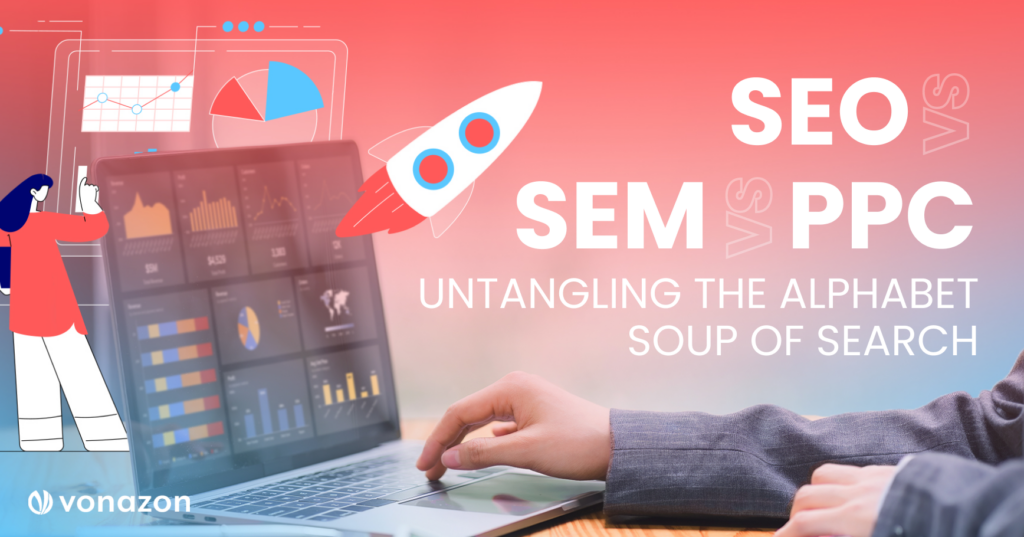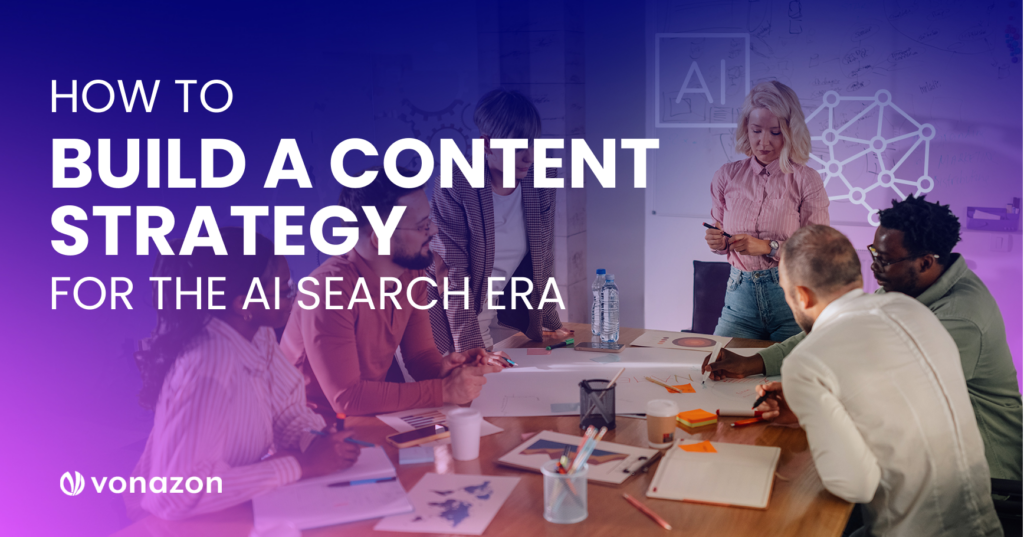SEO vs SEM vs PPC: Untangling the Alphabet Soup of Search
Everyone loves a good marketing acronym. But stack three of them together—SEO, SEM, and PPC—and even seasoned marketers start second-guessing themselves. Is SEM just paid search now? Is PPC the same thing as SEM? And if SEO is free traffic, why are we spending money at all?
Let’s clear this all up. Because if you’re not sure how these pieces work—or more importantly, how they work together—you’re either leaving money on the table or lighting it on fire. So let’s dive in to the ultimate showdown of SEO vs SEM vs PPC and find out the differences between the three, and how they can fit into your business.
The Real Difference: Not Just Definitions, But Mindset
Sure, we could give you a glossary. But definitions don’t help unless you understand why they matter.
SEO
Is about earning attention. It’s your content, your credibility, and your crawlable code all working together to rank organically. No ad spend required, but a lot of patience and writing skill is.
PPC
Is about buying attention. You bid on keywords, show up fast, and pay when someone clicks. It’s like skipping the line, but for a price.
SEM
Is the strategy that connects the dots between SEO and PPC. It’s about using both paid and organic tactics to maximize your visibility across search engines. Think of it like claiming multiple spots on the search results page instead of choosing just one.
Now, if you Google “SEO vs SEM,” you’ll find a lot of oversimplified charts. Most of them miss the point. This isn’t a cage match. It’s a toolkit. You just need to know when to pick the wrench and when to fire up the blowtorch.
PPC Is a Shortcut, Not a Strategy
Is PPC worth it? That’s like asking if a billboard is worth it. It depends on your goals, your budget, and whether anyone’s actually looking.
PPC can drive conversions quickly. But the key word is can, because results depend on execution. You can blow through $10K in Google Ads with nothing to show but a spike in bounce rate and a bruised ego.
But when you use PPC to test messaging in real time, target bottom-funnel leads with laser precision, and retarget visitors who ghosted your landing page, you’re no longer just throwing money into the void. You’re running controlled experiments to dial in exactly what works and doubling down on results.
SEO Is Slow, Until It Isn’t
There’s a reason marketers love SEO and dread it at the same time. It’s unpredictable. It’s slow. And it doesn’t give you a clean line between cause and effect.
But here’s what it does do: It builds equity. Every blog post, every meta tag, every backlink is a brick in your digital foundation. And once that foundation is stable? That’s when SEO starts showing off.
SEO is the kind of traffic that keeps showing up without a price tag attached. It builds the kind of trust an ad can’t buy – earned, not bought – and creates visibility that compounds over time, even while you’re off the clock. But to unlock that value, you have to stop treating SEO like a one-and-done checklist and start treating it like a living product. Just like any product worth launching, it needs updates, iterations, and ongoing investment to stay relevant and competitive.
Where Most Teams Go Wrong
MISTAKE
#1
Picking sides. Treating SEO and PPC like opposing teams instead of allies in the same locker room.
MISTAKE
#2
Running PPC without fixing what happens after the click. A great ad driving traffic to a mediocre landing page is just an expensive way to disappoint people.
MISTAKE
#3
Thinking SEO is “done.” It never is. Rankings change. Algorithms shift. Your competitors don’t sleep, so neither should your content strategy.
MISTAKE
#4
Letting your search strategy get siloed. If your SEO team isn’t talking to your paid search team, you’re missing out on insights that could save money and improve performance across the board.
How SEO and SEM Work Together
This is where it gets fun.
PPC isn’t just for driving immediate clicks, it’s also one of the most efficient ways to gather real-time intel on what your audience actually responds to. By analyzing which keywords, headlines, and CTAs convert best in your paid campaigns, you’re collecting proof about what drives action. That insight should feed directly into your SEO strategy. Instead of guessing which blog topics or landing page angles will rank and resonate, you’re building organic content around proven winners. It’s smarter, faster, and grounded in data that’s already paid for itself.
And when you align your paid and organic efforts, you can dominate. Showing up in both the ad slot and the organic results gives you top-to-bottom SERP coverage, boosting visibility and reinforcing credibility.
Users are far more likely to click when they see a brand appear twice, and Combining paid and organic listings can increase brand recall by up to 80%.
In a crowded search landscape, being seen once is good. Being seen twice is remembered.
When to Go All-In on SEO
If your product isn’t ready yet, but you know your ICP’s search habits, SEO is how you stake your claim early. Want to rank for “best CRM for construction firms”? Better start writing yesterday.
If your marketing team is lean but your growth goals aren’t, SEO gives you compounding returns. A blog that brings in 200 visitors a month might feel small, but do that 30 times and suddenly you’ve got 6,000 monthly visits without paying Google a dime.
If you’re in a trust-based industry (think healthcare, legal, financial services) SEO builds authority in a way ads simply can’t. You can’t outbid a reputation, you have to earn it.
And let’s not forget, good SEO improves everything else. Better site speed, better UX, better messaging. It’s a rising tide that lifts your whole digital presence. Stay patient, and always remember that SEO is a long game. If you’re not ready to invest time, people, and patience, you’re better off starting elsewhere.
When to Lean on PPC
You’ve got a product with clear benefits, a sales team hungry for leads, and a short runway to prove ROI? That’s PPC territory.
Want to drive sign-ups during a two-week campaign? Or retarget high-value prospects who bounced from your demo page? PPC will do that, and fast.
It also gives you a cheat code to audience insights. With PPC, you quickly learn which headlines actually grab attention, what your real cost-per-lead looks like, and who’s actively searching and clicking—and just as importantly, who isn’t. This kind of data sharpens your entire marketing strategy, from content creation to sales enablement.
Here’s the caveat: PPC is never set-it-and-forget-it. It’s babysitting with spreadsheets. You need someone watching cost-per-clicks, split-testing creatives, and adjusting bids with the speed and precision of a Formula 1 pit crew. Without that, your budget will go up in smoke.
Stop Arguing Acronyms and Start Building Strategy
SEO vs SEM vs PPC isn’t a debate—it’s a question of timing, budget, and goals.
Want fast feedback and quick wins?
PPC
Want long-term visibility and trust?
SEO
Want to be like modern marketers and win?
SEM
Still not sure how to balance it all without overpaying or burning out your team?
That’s what we’re here for. At Vonazon, we don’t just run ads or write blogs. We build complete search strategies that move the needle, using data, creativity, and a borderline unhealthy obsession with performance.
Let’s figure out your best mix. Reach out, and we’ll build a plan that works smarter and costs less.







